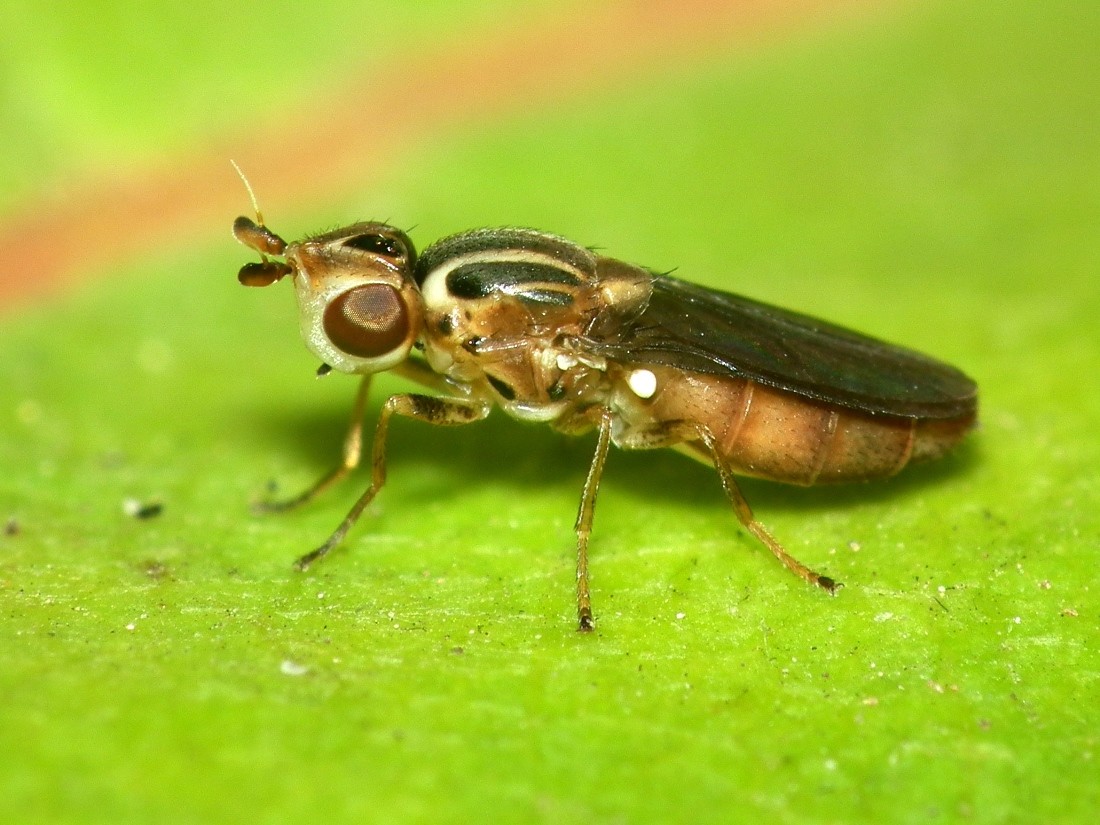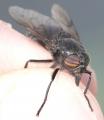Diptera.info :: Identification queries :: Diptera (adults)
Who is here? 1 guest(s)
|
Parectecephala longicornis
|
|
| Rui Andrade |
Posted on 17-11-2022 01:01
|
|
Member Location: Portugal Posts: 3123 Joined: 19.06.07 |
Hi, I post this photo at the request of Michael von Tschirnhaus. location: Esposende (Portugal) date: 10/10/2017 Rui Andrade attached the following image:  [202.06Kb] Edited by Rui Andrade on 20-11-2022 23:53 |
| von Tschirnhaus |
Posted on 18-11-2022 17:51
|
|
Member Location: Bielefeld, Germany Posts: 454 Joined: 04.11.07 |
Chloropidae, Chloropinae: Parectecephala longicornis (Fallén, 1820). Along the sandy and dune covered European coasts and comparable inland biotopes this species is not rare. I suspect that the larvae develop in the stolons or roots of Carex arenaria (Cyperaceae) as I caught it by sweeping above this sedge. This robust species seems to be easily identified with its white arista, elongate third antennal segment, protruding frons and the deep velvety black spot on the anterior end of the inner lateral stripe on the scutum (the spot is less distinct in alcohol preserved material). Different from other Chloropinae with a white arista, this species and its congeners are not ovoviviparous (my own studies). But on the Iberian Peninsula and in the Provence, Southern France (my own collecting of 3 females, 1.iv.1980, Pelissane), a very similar species occurs which was also included in Parectecephala by Becker 1910 in his Palaearctic synopsis under the preoccupied name „P. longicornis (Zetterstedt, 1848)“, namely Lagaroceras andalusiacum (Strobl, 1899). From Iran (16.vii.2009, Jahrom/Fars province, 28.534585°N 53,546905°E) I possess a further undescribed sibling species. Here are some differences between L. andalusiacum and P. longicornis: First species: Scutum much more densely haired; no oblique furrow on occiput running towards the base of vti and vte setae; anepisternum bare; no velvety black spot on the lateral stripe of scutum; head not appearing „swollen“; the tiny single propleural seta above fore coxa is present (longicornis: absent); anepisternum, upper half of katepisternum and whole meron (= hypopleuron) completely shiny; sternites not divided by a central, less sclerotized, line; a distinctly smaller species. L. andalusiacum may be the senior synonym of L. nigrum Yang & Yang, 1995 from China. L. andalusiacum is an ovoviviparous species. This is a first still unpublished record for ovoviviparity in the genus Lagaroceras, detected by me in the mentioned Pelissane specimens: One single large larva, still inside its egg shell, filled the whole abdomen of its mother. Searching the keyword „viviparity“, 17 titles on ovoviviparity in Chloropidae are available in my forthcoming database „World Chloropidae online“. |
| Jump to Forum: |













